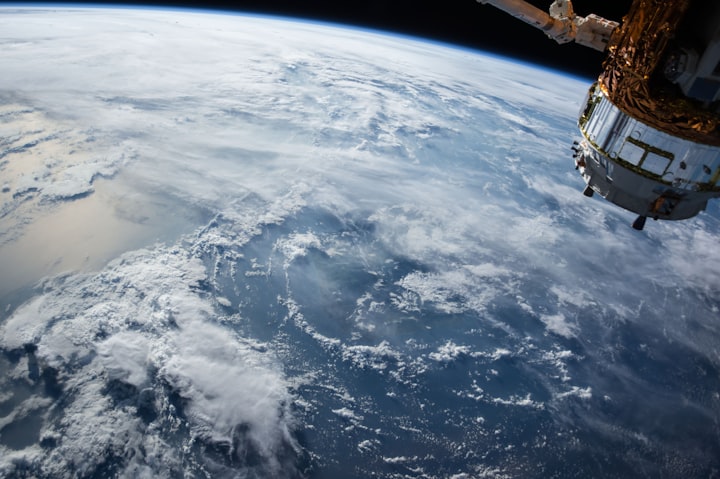Unveiling the Cosmos: 8 Captivating Space Discoveries You Almost Missed Hearing About
A Comprehensive Look at the Most Exciting Space Explorations and Revelations of 2024 (So Far)
Space research is about to get wild. With recent advancements in space-faring and space-viewing technology, we’re truly in a golden age of astronomy. The pace of discovery and advancement has seemingly accelerated in the first few months of this year. And, with promising reports and plans from major research institutions across Earth, these discoveries seem to be a good omen for what’s to come. From distant exoplanets to awe-inspiring phenomena, explore the cosmos and witness the wonders that have emerged from the forefront of space exploration in 2024 — so far.
A New Space Object Found to be the Most Luminous Ever Observed
In late February, a team of researchers in Australia published a study describing a black hole that is now considered the most luminous object ever seen in space to date. The massive astronomical object, named J0529–4351, has a quasar (a luminous area surrounding the black hole) that feeds on the massive amounts of material pulled in by it. Though not the largest black hole we’ve observed in the universe, J0529–4351 is the fastest-growing one, making for quite a spectacular light show as objects approach the singularity.
Learn More Here: The accretion of a solar mass per day by a 17-billion solar mass black hole | Nature Astronomy
A New Realistic Computer Model to Help Robots Collect Moon Dust
In March, scientists began using virtual reality to better understand the surface of the moon. At the University of Bristol, a team of researchers created “a digital twin of moon dirt, known as lunar regolith,” to determine the behavior of lunar soil so that they could practice collecting it. This successful breakthrough in particle simulation will allow for better astronaut training, improve the ability to test moon equipment like rovers, and help researchers determine how they can use moon soil to eventually grow food for long-term moon living in the future.
Learn More Here: Moon dust: Simulating lunar dirt will make it easier to collect • Earth.com
The James Webb Telescope Detects An Ancient Galaxy
At the very beginning of March, astronomers were able to use the James Webb telescope to spot a record-breaking view: the oldest galaxy ever observed by scientists. The galaxy, which is currently observed as ‘dead’ (meaning that it no longer forms stars), is an estimated view from 13 billion years in the past, only 700 million years after the Big Bang.
The international team of researchers believes that this discovery will help them better understand dead galaxies and whether or not they can “come back to life”. The team intends to continue searching for other galaxies of this age and older in the near future.
Learn More Here: Astronomers spot oldest ‘dead’ galaxy yet observed | ScienceDaily
Discovery of an Earth-sized Planet in a Habitable Zone
In January, an international team of scientists reported a discovery of a “super-Earth” about 137 light years away from us. The planet, which is currently called TOI-715 b, has similarities to both Earth and Neptune and is just far enough away from its local star to be able to sustain liquid surface water and, thus, support life. Though more studies are needed to locate the water in question, if there is indeed any, TOI-715 b may very well be a candidate for one day discovering extraterrestrial life.
Learn More Here: Discovery Alert: A ‘Super-Earth’ in the Habitable Zone — Exoplanet Exploration
The Webb Telescope Finds Evidence for a Neutron Star
In late February, NASA’s James Webb Space Telescope captured an incredible image, “emission from a neutron star at the site of a recently observed supernova”. The Supernova, titled, SN 1987A. Previous to the capture of this image, scientists had yet to know for sure whether this event produced a black hole or a neutron star. Now, with incredible evidence from the James Webb telescope, NASA will be able to witness and study the formation of a neutron star after a supernova event in real time.
Learn More Here: Webb Finds Evidence for Neutron Star at Heart of Young Supernova Remnant.
Final Preparations for Launch of the Lunar Trailblazer
I’m a little early on this one, but just have to mention it because of how neat it will be later this year. Over the past several years, scientists have been working diligently to create a research satellite that will orbit the moon to detect and map deposits of water. NASA has yet to announce an official launch date as of writing this article but is planning on launching it before the end of 2024. Once launched, it will take the satellite about 6 months to reach the moon.
Learn More Here: Lunar Trailblazer
Successful Launch of the Vulcan Centaur
At the very beginning of January 2024, the ULA (United Launch Alliance) successfully launched its Vulcan rocket into space, earning itself the first certification required for use as a part of the U.S. Space Force’s national security initiatives. The rocket has incredible potential to improve our space-faring potential as, according to the company, the rocket provides “industry-leading capabilities to deliver any payload, at any time, to any orbit.” With plans to earn the second certification in the next few months, we’ll likely hear more about the incredibly advanced rocket before the end of the year.
Learn More Here: United Launch Alliance Successfully Launches First Next-Generation Vulcan Rocket
Successful Test Flight of the SpaceX Starship
For another year in a row, SpaceX is ramping up its missions to space, with plans for up to 148 total launches this year. A good portion of those launches will be by the famed Starship, which will be heavily tested over the next few months. In recent press releases and posts by CEO Elon Musk, the billionaire shared that this prototype ship, which successfully launched in mid-March, will be the machine that takes humanity to Mars. It still needs further research before it’s ready, however. But the company claims that the ship might be ready in as little as five years!
Learn More Here: Elon Musk Says Future SpaceX Starship ‘Will Travel To Other Star Systems’ After Rocket’s Latest Test
–
After less than one-third of 2024 has passed us by, the year is shaping up to be an incredible one for the advancement of space research. With plans for continued focus by major space organizations around the world, we’ll likely continue to see breakthroughs at a similar break-neck pace in the following months.
Here’s to an incredible first quarter of 2024 and, in the spirit of exploration, let’s look forward to how our researchers will shoot for the stars in the remainder of the year.
–
Interested in learning more about space? Check out the article below by the Planetary Society that covers some of the amazing news we have to look forward to in 2024.
What to look forward to in space in 2024 | The Planetary Society
Are there any newsworthy moments that I missed? Have a discovery you’d like to share? Let me know in the comments! I’d love to hear more :)
--
Cross-posted from Medium. Follow my main account there for new articles posted weekly! :)
About the Creator
Olivia L. Dobbs
Science Enthusiast, Naturalist, Dreamer, Nerd.
I crosspost my Medium articles here :)
You can find my main account on Medium: https://medium.com/@oliviadobbs13
Check out my science! -> bit.ly/DobbsEtAl







Comments
There are no comments for this story
Be the first to respond and start the conversation.